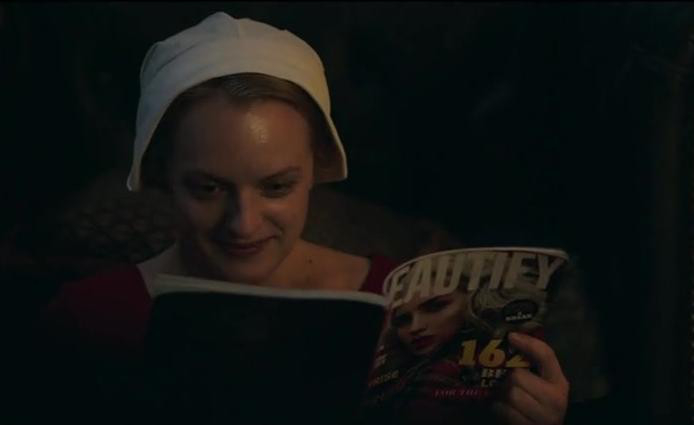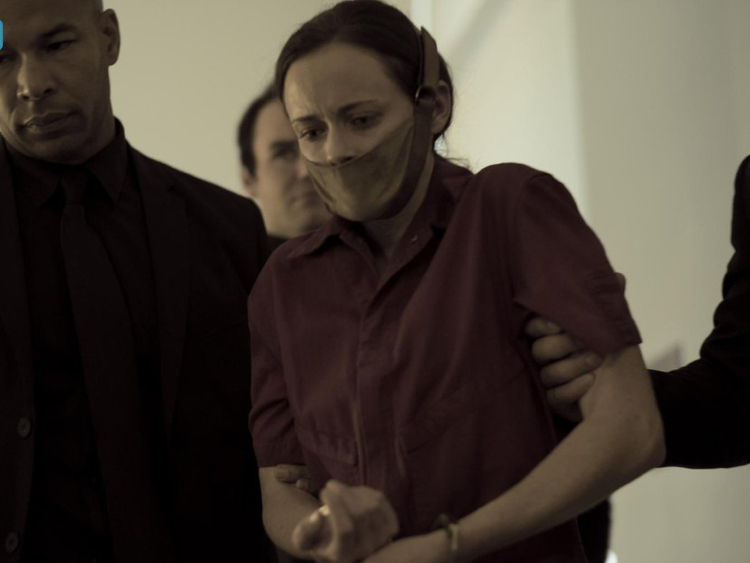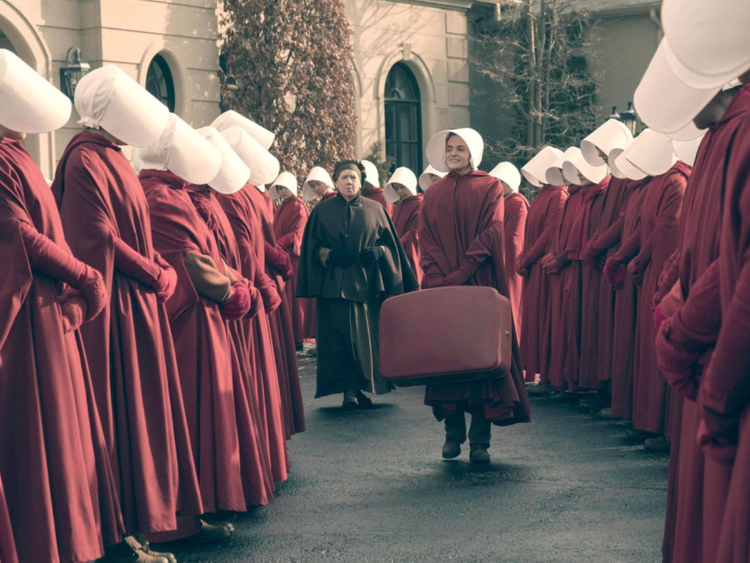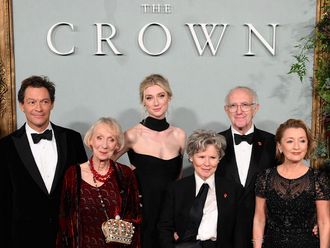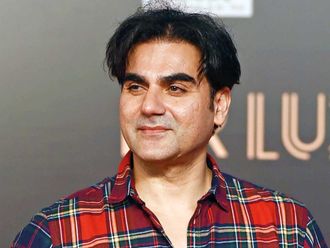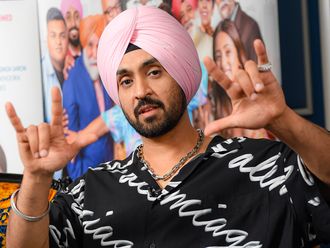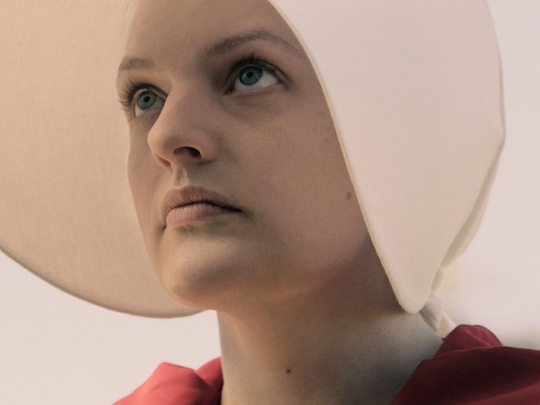
Warning: this contains spoilers for episodes one to three. Do not read on if you haven’t watched them.
The TV adaptation of The Handmaid’s Tale has been called a warning to all women, to conservative women, and to young people who may be complacent about the liberal values they enjoy. But, cleverly, the series also takes one relatively minor aspect of Margaret Atwood ‘s novel — “gender treachery” — and brings it to the fore.
In an age of fractious debates about LGBT issues, her 1985 novel suddenly feels very topical indeed.
The ruling Sons of Jacob were inspired by a number of things, Atwood has said, including 17th-century puritanism, the rise of the US Christian right, and the 1979 Islamic revolution in Iran. The events described by the narrator Offred unfold in the late 20th century, but here we are in the 21st with the Christian right in the White House, and the horrors women and girls endure in areas controlled by extremists widely documented. Atwood’s dystopia no longer seems so distant.
The TV series presses the comparison further. On screen, the revolution happens in the present. This is now. As Boston falls, we see characters talking about Uber and online dating . There’s a particularly modern embrace of irony in the dialogue, a sense of paralysed incredulity that this could be happening at all. When the female characters have their money taken away and given to their husbands, they sit at the kitchen table and make gallows-humour jokes about it, because that’s all they can do. It is claustrophobic viewing because it feels so recognisable.
The Handmaid’s Tale has already been renewed for a second season and, inevitably, the show has become broader than its source material: it needs more than Offred’s plight to sustain it. While there have been plenty of alterations to the structure and focus, the decision to invent new LGBT characters, and to show the suffering they experience under a regime maniacally focused on “traditional” family, is striking.
Homosexuality is punishable by death. Atwood describes men hanging from walls with purple placards around their necks, having been found guilty of gender treachery. As well as Offred, readers of the book root for Moira, her best friend from college. She’s brash, funny, wears purple dungarees, paints one nail gold, has a single dangly earring (it was written in the 1980s, after all), and writes a feminist paper about date rape. Atwood calls her “eccentric”. She’s a lesbian, we later find out, in an argument over Offred’s affair with a married man: “She’d decided to prefer women, and as far as I could see she had no scruples about stealing them or borrowing them when she felt like it.” Moira is the rebellious heart of the TV show, too. Played by Samira Wiley, who made her name as Poussey in Orange Is the New Black, she’s the survivor who keeps Offred (June) in the fight. It’s not incidental that she’s a lesbian. Moira’s experience widens the focus: she talks of “dyke purges”, one of which exiled her girlfriend to the colonies — to clean nuclear waste and face certain death.
When Moira’s money is frozen, she does not have a husband from whom she can collect handouts. “That’s one of the messages of the show,” Wiley, who recently married her female partner, told the Hollywood Reporter. “That we need to, as a community, stay vigilant, never become complacent.” The series takes another minor character, Ofglen, and gives her a bigger role, filling out her life before Gilead. At first, Offred believes Ofglen — played by former Gilmore Girl Alexis Bledel — to be a pious follower. But Ofglen turns out to be a rebel and tries to recruit Offred to Mayday, the underground resistance.
On screen, Ofglen is also Emily, a former academic, who once had a wife and a child. The briefest mention of gay marriage, a nod to the fact that it was once legal in this world, is surprisingly winding - a reminder that hard-won rights can be lost in an instant. We see the two women walk past the wall where men hang with symbols painted on their hoods, but Atwood’s purple placards have been replaced with pink triangles , the badge used in Nazi concentration camps for homosexual prisoners.
Later, Ofglen is taken away in a black van, not because of her Mayday connections, as we first suspect, but because of gender treachery: an illicit affair with the Martha, or housekeeper, of her residence. The Martha is hanged in front of her. Although she is told in a courtroom that her “existence is an abomination”, Ofglen is sentenced to “redemption” because she is a handmaid, and in Gilead fertility is invaluable.
Her punishment is severe, though: she undergoes a forced clitoridectomy. While the programme makers have mentioned their consultations with the UN over the importance of highlighting female genital mutilation, there is another allusion here - to gay conversion therapy, still not illegal in Britain. “You can still have children, of course,” the brutal Aunt Lydia tells her, “but things will be so much easier for you now. You cannot want what you cannot have.”
The Handmaid’s Tale is chilling for women, and it should be. The current vice-president of the US is so evangelical, he does not dine alone with a woman who is not his wife - a belief Commander Waterford, head of Offred’s household, would hold dear. But for LGBT viewers, The Handmaid’s Tale is nightmarish. These discussions in the US of religious freedom acts and bathroom bills (defining access to toilets) could have been concocted in a boardroom in Gilead.
To see a dead man hanging from a wall with a pink triangle on his hood is to remember the current situation in Chechnya, where Amnesty reports that the government denies the existence of gay men , while encouraging so-called honour killings and carrying out a “preventive mopping up”. It is to think of Daesh throwing men suspected of homosexuality from rooftops.



